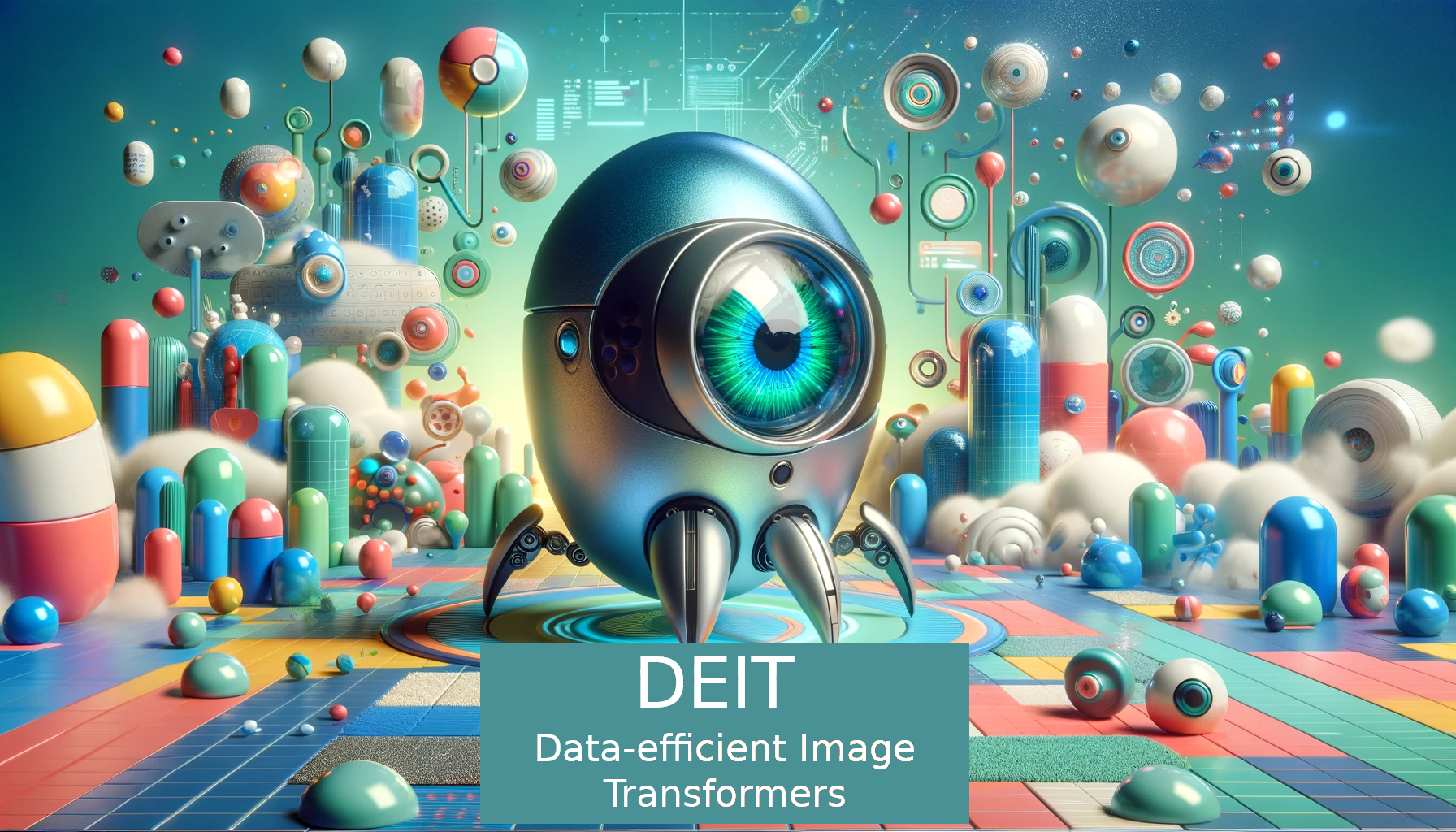DeiT vs ViT
Author: Stu FeeserData-efficient Image Transformers (DeiT) vs. Vision Transformers (ViT): Revolutionizing AI with Less Data
The field of computer vision has been a battleground for numerous innovative models aiming to understand and interpret visual data with increasing accuracy and efficiency. Among these, Vision Transformers (ViT) and Data-efficient Image Transformers (DeiT) stand out for their unique approaches to handling image data. While ViT brought the power of transformers to computer vision, DeiT emerged as a solution to one of ViT’s significant challenges: the need for extensive training data. This blog contrasts these two groundbreaking technologies, emphasizing how DeiT optimizes data efficiency compared to its predecessor.
Vision Transformers (ViT): A Quick Recap
Vision Transformers process images by dividing them into small patches, treating each as an individual token similar to words in a sentence. This method allows ViTs to capture the global context within an image, offering a comprehensive understanding that often surpasses traditional convolutional neural networks (CNNs). However, ViTs have a voracious appetite for data, relying on massive datasets like ImageNet for pre-training to achieve their best performance. This requirement can be a significant hurdle, especially in scenarios where collecting vast amounts of labeled data is impractical.
Entering Data-efficient Image Transformers (DeiT)
DeiT was introduced with a specific aim: to reduce the dependency on large-scale datasets while maintaining or even surpassing the performance levels of ViT. It achieves this through two main strategies:
-
Knowledge Distillation: DeiT introduces a “distillation token” that mimics the role of a student learning from a teacher. During training, this token absorbs information not only from the actual labeled data but also from the “soft labels” provided by a pre-trained teacher model. This approach allows DeiT to leverage pre-existing knowledge, effectively bootstrapping its learning process with a fraction of the data required by traditional methods.
-
Efficiency in Training: By utilizing knowledge distilled from a teacher model, DeiT requires significantly less data for training. This efficiency opens up new possibilities for using transformers in environments where data is scarce or expensive to annotate.
DeiT vs. ViT: Understanding the Differences
-
Data Requirements: The most striking difference lies in their data efficiency. ViT’s reliance on extensive datasets for pre-training is mitigated in DeiT, which can achieve competitive results with fewer data thanks to knowledge distillation.
-
Training Approach: ViT follows a straightforward training approach, relying heavily on the volume of data. DeiT, on the other hand, incorporates the distillation token, learning from both the dataset and the insights of a pre-trained model, making its training more nuanced and data-efficient.
-
Performance: Despite its lower data requirements, DeiT does not compromise on performance. In many cases, it matches or even exceeds the accuracy of ViT models, especially in scenarios with limited labeled data.
-
Accessibility and Versatility: DeiT’s reduced need for vast datasets makes transformers more accessible for a broader range of applications, particularly in fields where data collection is challenging or where privacy concerns limit the availability of data.
Implications and Applications
DeiT represents a significant step forward in making transformer models more practical and accessible for a wide range of computer vision tasks. Its ability to learn effectively from limited data opens the door to applications in medical imaging, where annotated datasets are often small and costly to produce, and in environmental monitoring, where the rapid analysis of satellite images is crucial.
The Future of Image Transformers
As we move forward, the innovations introduced by DeiT are likely to inspire further research into making AI models more data-efficient and accessible. The balance between data requirements and model performance remains a critical area of exploration, with DeiT providing a compelling blueprint for future developments.
